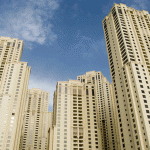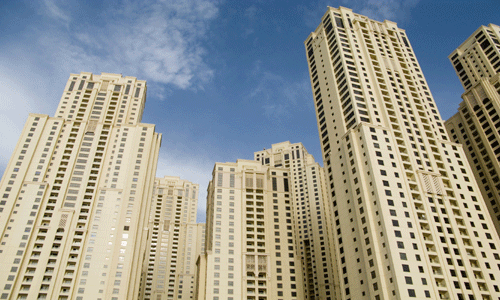 Track2Realty Exclusive: While most of the metro cities are crumbling under the burden of increasing urbanisation and the load on the land and infrastructure has led the life miserable there are cities like Pune which seem to be learning from the mistakes of these metro cities and the late movers’ advantage seem to be helping the city grow holistically in terms of its real estate developments and infrastructure issues. What makes the case of Pune even more unique, reasons why it is rated as the best city out of the four established metros is the fact that the social infrastructure has gradually been shaping up well in the city to compliment the physical infrastructure.
Track2Realty Exclusive: While most of the metro cities are crumbling under the burden of increasing urbanisation and the load on the land and infrastructure has led the life miserable there are cities like Pune which seem to be learning from the mistakes of these metro cities and the late movers’ advantage seem to be helping the city grow holistically in terms of its real estate developments and infrastructure issues. What makes the case of Pune even more unique, reasons why it is rated as the best city out of the four established metros is the fact that the social infrastructure has gradually been shaping up well in the city to compliment the physical infrastructure.
Why Pune is being rated as the best city to be considered as the metro city? What is it in Pune that gives it a cutting edge vis-à-vis the existing metro cities? Will Pune overtake other metro cities in terms of investment, opportunity cost and overall liveability index? These are some of the questions often been asked when Pune is referred as the city that should get the tag of India’s fifth metro city.
According to a report by ASSOCHAM on ‘The 7th emerging metro city in India’, Pune will soon acquire the status of being a metropolitan city in India. It owes its upgradation to a fast development pace in the area of infrastructural facilities, friendly business environment, education avenues and employment opportunities. Contributing factors include the high real estate prices and a large population base as compared to other upcoming cities. The existing infrastructure in Pune is considered to be better than most other Indian cities in some sectors and micro markets.
However, what makes the quality of life better in the city is the fact that along with the physical infrastructure, the social infrastructure of Pune has been developing in a fast-pace too. There have been various new establishments of health facilities, educational facilities and public amenities. Social infrastructure in Pune is better than any known city of this size in the country. Does it mean that Pune has already overshadowed Mumbai? Not really, as the developers and analysts have some concerns that need to be addressed in the city as far as its overall growth trajectory and direction is concerned.
Manju Yagnik, Vice Chairperson, Nahar Group feels that there are often comparisons made between the infrastructure of Mumbai and Pune. The popular consensus seems to be that both cities are equally challenged as far as supportive infrastructure is concerned. This is inappropriate as Mumbai’s growth pattern has been very different from the organised growth of Pune.
“The city has evolved into the country’s financial capital, and the pressures on it are enormous and overwhelming, considering the fact that a significant part of it is an island that cannot grow horizontally to accommodate the growing real estate demands. Pune, on the other hand, has an advantage by virtue of the fact that it has been able to add to its borders by means of surrounding villages. This has served to decreased pressure on the central city and encouraged an outward growth pattern,” says Yagnik.
Kishor Pate, CMD, Amit Enterprises Housing maintains that the ratio of social infrastructure to physical infrastructure in Pune differs significantly according to areas. In most of the central areas, rudimentary social infrastructure outweighs the physical infrastructure, though its quality tends to be of a lower degree. Malls, cineplexes, jogger’s parks and modern hospitals are made available in the newer areas where land availability and better proactive urban planning made them possible.
“It is true that a lot of the traditional areas of Pune have not had the benefit of holistic urban growth. However, areas that developed later on have followed a better pattern and offer a lifestyle experience that none of the MRR’s regions – with the possible exception of hyper-expensive South Mumbai – can offer. The reason is that housing demand in Pune is still driven by the preferences of end-users, while most of Mumbai has been developed purely on speculative demand. Also, Pune is constantly adding new areas for development while Mumbai is severely constricted in this respect,” says Pate.
Arvind Jain, Managing Director, Pride Group, however, differs with Pune’s infrastructure excellence when he says that urban planning is not a term we would normally associate with a city like Pune. According to him, real estate development in this city has been taking place in an unplanned manner. Developers acquire plots according to their financial capacities and fill them to the maximum possible (or permissible) extend with saleable spaces.
“Building designs and construction quality vary wildly, again depending on each developer’s financial ability or willingness to invest in these factors of construction. This is urbanisation at its worst. While erecting buildings is definitely an integral part of making an area inhabitable, such a haphazard approach leads to multiple long-term challenges. In the first place, most of the open spaces that are so necessary for harmonious and healthy city life are consumed,” says Jain.
Anil Pharade, Chairman, Pharande Spaces also feels that in cities like Pune, property buyers have no choice but to turn a blind eye to the absence of sufficient infrastructure. He agrees that the developers are aware of the fact that they will face numerous inconveniences, but they are helpless.
“Many opt to buy into projects that boast of compensatory measures to overcome the infrastructure deficit. However, no matter in how many ways Pune developers compensate for lack of civic infrastructure, they cannot add more than a token patch of landscaped lawn by ways of natural ambience,” says Pharande.
Developers may be having their own issues and concerns with the direction in which the city of Pune is growing. However, most of the analysts and urban planners agree that despite of these challenges Pune has definitely show cased a better model of urban planning than most of the other cities. It has not only learnt from the mistakes of the Mumbai but at the same time has been benefitted as the late movers in terms of fast paced urban growth. There are definitely reasons why urban planners in many other cities are looking curiously at Pune today.





